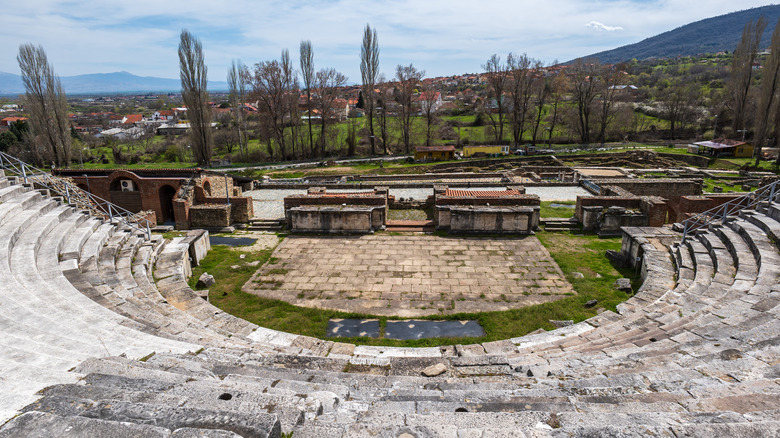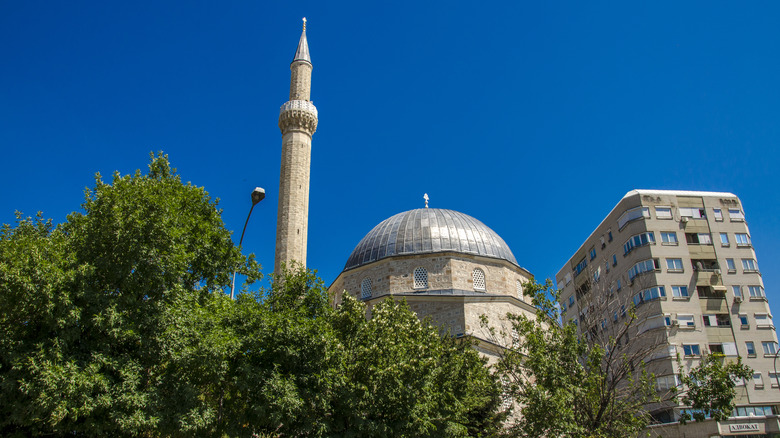There are certain go-to sights and cities in Europe that history buffs adore. People have been writing travel guides about some of them since ancient times. You’re familiar, of course, with the Acropolis in Athens, Greece, Notre Dame in Paris, and the Tower of London. Maybe you’ve visited them already, and you’re looking for something new … well, old, actually, but new to you. Why not try something off the beaten path? We’ve got a wonderful city for you to visit that has been around for a very long time and has some incredible structures and ruins, a national park, and a connection to a very famous figure. This city is Bitola in North Macedonia.
Bitola was founded in the 4th century B.C.E. by Philip II of Macedon. If that sounds familiar, it’s probably because Philip is the father of Alexander the Great, who conquered the biggest empire in the ancient world. Bitola sits a few miles north of the border with Greece, and it has some gorgeous views of the surrounding mountains. There are beautiful churches and mosques to visit, a famous clock tower, a pedestrian street full of shops and cafes called Širok Sokak, and some incredible ruins. Here’s what you need to know about Bitola, North Macedonia, and what you can do and see when you visit.
Bitola’s ancient past

In the middle of the fourth century B.C.E., Philip II of Macedon founded Heraclea Lyncestis, which was subsequently called Bitola. The ruins of the original city, which was later ruled by the Romans, can be found just over a mile and a quarter outside current Bitola proper. It was named after the mythical hero Heracles (aka Hercules), with Lyncestis referring to the region the city is in. It’s right at the base of Mount Baba, and you can still see a number of structures when you visit. There is a Roman bath and an ancient amphitheater, as you can see in the picture above, that once sat around 3,000 people. There are stunning mosaic floors that are right out in the open to look at, small and large basilicas, and an Episcopal residence. You’ll even see statues of the goddess Nemesis, who ruled divine justice and retribution.
Moving forward in history, pay a visit to the Iskhak Chelebi Ibn Issa mosque (in the picture below), built in 1506. It’s one of the oldest mosques in the country and sits across from Bitola’s famous clock tower, which plays music each hour. You can also visit the Yeni mosque in the center of the city, built between 1558 and 1559. The beautiful building has been used in the recent past as an art gallery. However, during some recent archaeological research, it was found to be sitting on top of the old St. George church. It’s now being remade into an art gallery with a clear floor so the remains of the older building can be seen.
More to do in Bitola

Moving even further forward, St. Dimitrij Church was built in 1830 after an earlier chapel burned down in 1726. The caveat from the then-Turkish government for creating this church was that it had to be built lower than the mosques around it, so it was dug partially into the ground. These days it has galleries to visit, a throne, iconostasis (a screen with religious icons), and a pulpit, as well as some beautiful paintings on the ceiling. The church, clock tower, and mosques, as well as plenty of cafes, restaurants, theaters, and shops, are all on Širok Sokak street, a pedestrian thoroughfare that you must take time to wander down.
If you want to take advantage of the spring and summer weather (summer sees highs in the 70s and low 80s), pay a visit to Pelister National Park, the first one in North Macedonia. It was given the designation in 1948 and is the home to the pretty Macedonian pine, aka the Molika tree, a symbol of the park. Some of these trees in Pelister Park are around 230 years old. The main feature of the park is the beautiful Mount Baba, aka Mount Pelister, which gives the park its name. You can follow the Via Egnatia, an ancient road that goes through the park and once felt the feet of Roman legions, the Tsars of Byzantine, and the Christian apostle Paul. If you’re traveling to this part of the world, check out the rare wildlife at this mountain on the Greek side of Macedonia.

